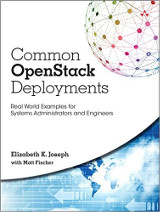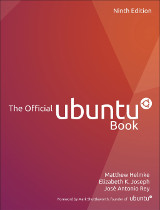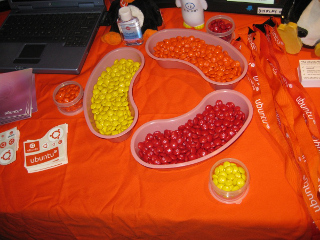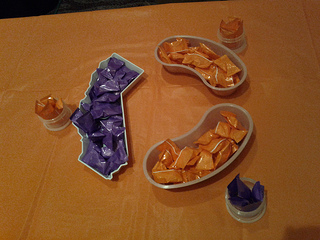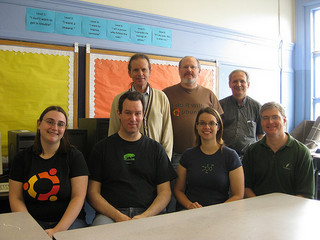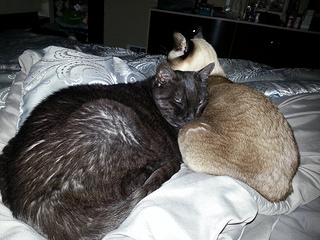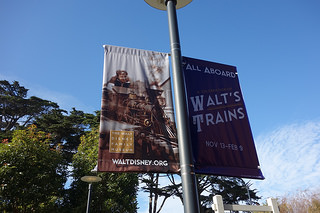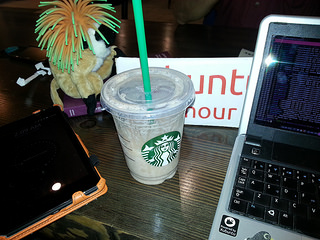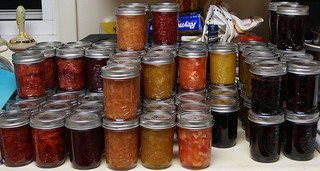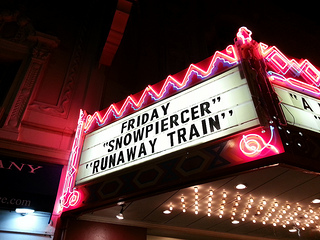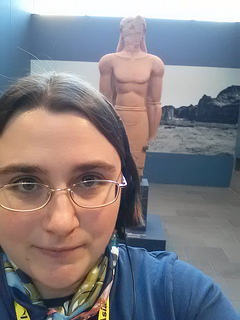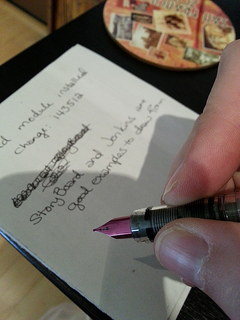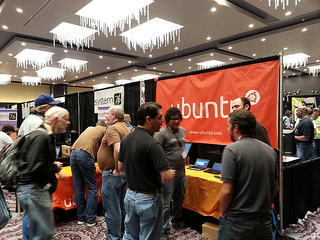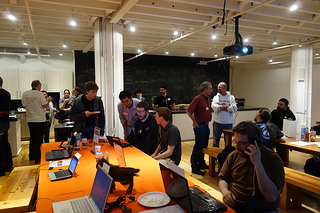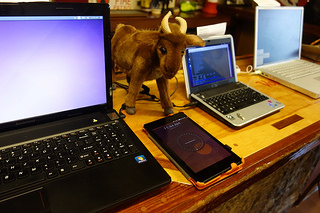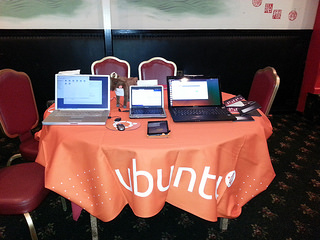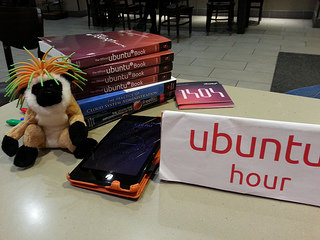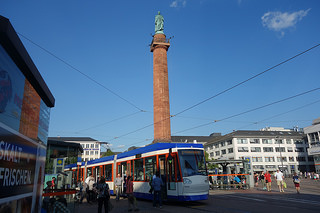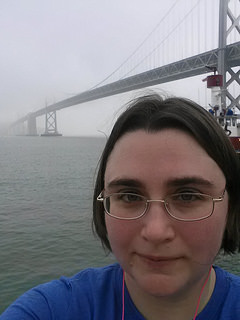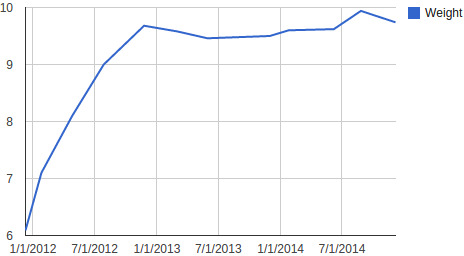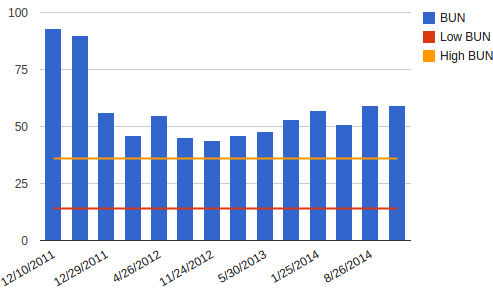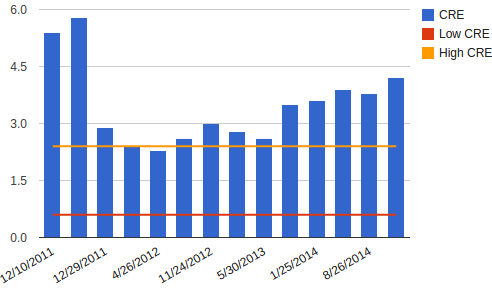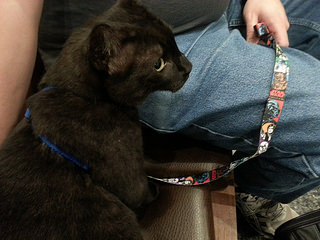This past long weekend I decided to take one final trip of the year. I admit, part of the reason for having any year end trip was to hit the 100k flight miles this year. This was purely for hitting that real number, it doesn’t help me get any kind of status since my miles are split between 2 alliances due to the USAirways split from Star Alliance during their American Airlines merger.
So I had a look at a map. Where have I never been, have friends I can crash with and is at least 1200 miles away? St. Louis!
I flew in on Christmas and met up with my friend Ryan who I’d be staying with. Options were limited for food, but we were able to snag some tickets at an AMC Dine-in theater so I could see the final Hobbit movie and get some food.
Friday Ryan had work, so I met up with my friend Eric and his wife Kristin for a day at the St. Louis Zoo. Routinely ranked among the top five in the country, I was pretty excited to go. The zoo is also free and the weather was exceptionally nice for the end of December in Missouri, with highs around 57 degrees. Perfect day for the zoo!
 Eric and I with the giraffes
Eric and I with the giraffesSome of the exhibits were closed for renovation (penguins!) but I really enjoyed the big cats and the primate house and herpetarium. They also did something really clever with their underwater exhibit: rather than having a shark tunnel that you can walk under, it’s a seal lion tunnel. The cool thing about sea lions is that they’re interactive, so zoo goers learned that if you throw a ball (or baseball cap) around in the tunnel, the sea lions will chase it. So cute and fun!
More photos from the zoo here: https://www.flickr.com/photos/pleia2/sets/72157649609657700/
Saturday and Sunday I hung out with Ryan. First stop on Saturday was the City Museum. The website doesn’t really do the insanity of this place justice, “big playground” doesn’t really do it either. We started off by going through the museum’s “caves” where you walk and climb through all kinds of man made caves, with dragons and other creatures carved into the walls. Once you get through those, you find yourself going up a series of metal stairways and landings with one goal: to get to the 10 story slide. I did it, and managed not to throw up afterwards (though it was a bit touch and go for a couple minutes!).
 In the City Museum caves
In the City Museum cavesThe museum also features all kinds of eclectic collections, from massive carved stone pieces to doorknobs to every Lego train set ever made. For an additional fee, the second floor has the World Aquarium with a variety of animals, aquatic and not. I’d probably skip the aquarium next time, the exhibits were cramped and I wasn’t too impressed with the cage/tank sizes for most of the animals.
Finally, there’s the outdoor MonstroCity, described as: “A captivating collision of old and new, architectural castoffs and post-apocalyptic chaos, MonstroCity is at once interactive sculpture and playground. Comprised of wrought iron slinkies, fire trucks, stone turrets, airplane fuselages, slides of all sizes and shapes” – yep, that’s about right. Like the caves, there were all kinds of places to climb through, with adults having as much fun as the kids. The structures were quite wet and I was feeling very old at this point, so I kept my own explorations pretty conservative, taking walkways and stairways everywhere I went, including to both of the airplane fuselages. Even so, there were some scary moments as parts of the structure move slightly as you walk on them. I was a bit sore after my City Museum trip with all the climbing and head bumping (low ceilings!), but it really was a lot of fun.
 MonstroCity
MonstroCityAlso, pro-tip: I enjoyed taking photos throughout my visit, but holding on to a camera and phone while climbing everywhere was quite a challenge at times, even with my hoodie pockets. If you can do without having a photographic record of your visit, it may be more fun to leave the electronics in the car. More photos from City Museum here: https://www.flickr.com/photos/pleia2/sets/72157647687508774/
After City Museum, we headed over to Schafly Bottleworks to do a brewery tour. As a big beer fan, I was excited to see one of the several craft breweries that sit in the shadow of giant Anheuser-Busch that also calls St. Louis home. The tour was fun, and was followed by a tasting. They make some great ales, but I was particularly impressed with their Tasmanian IPA, which uses Australian Topaz and Tasmanian Galaxy hops for a nice, complex taste. We skipped lunch at the brewery to head over to Imo’s Pizza, with the super thin crust and Provel cheese, this St. Louis classic was a must. Yum!
Our evening was spent with at Three Sixty rooftop bar downtown, with a great view of the Arch, and then over to Baily’s Chocolate Bar for some fantastic dessert.
Sunday! This being a short trip, I packed in as much as possible, so Sunday began with 10:30AM tickets for the Gateway Arch. Getting there early was a good move, by the time we left around 11:15 the line for security into the facility was quite long, and with the weather taking a turn for the colder (around 32 degrees!) it was nice to not have to wait in such a long line in the cold. The trip up to the top of the arch began with a ride in their little super 1960s-style trams:
At the top, 630 ft (63 stories) up, there are small 7″x27″ windows where you can see the Mississippi river and the city of St. Louis. Going to the top was definitely a must, but we didn’t stay up too long because it was quite busy and the views were limited with such small windows.
Also a must, an arch photo:
And arch tourist in this, my St. Louis blog post:

We had lunch over in Ballpark Village at the Budweiser Brew House before heading off on our last adventure of the trip: The Anheuser-Busch Brewery Tour. Now, I’m not actually a fan of Budweiser. It’s rice-based beer and I don’t care for lagers in general, being more of an ale fan (and fan of hops!). But I was in St. Louis, I am a beer fan, and the idea of visiting the home of the biggest beer company in the world was compelling. We did the Day Fresh Brewery Tour. We got a couple samples throughout the tour, and I have to admit I was pleasantly surprised by the the Michelob AmberBock, while still quite mild for a Bock, it was smooth and didn’t have any unpleasant aftertaste. The tour gave us an opportunity to visit the Budweiser Clydesdales, who have a pretty amazing building to live in (beautiful, heated, wood paneling, nicer than most human houses!). From there was a tour of the Brew House and Clock Tower and finally the BEVO Packaging Plant where they have their canning and bottling lines which run 24/7. But my favorite thing on the whole tour? The hop vine chandeliers in the historical brew house. Our tour guide told us they were bought by the company from the 1904 World’s Fair.

More photos from the brewery tour here: https://www.flickr.com/photos/pleia2/sets/72157647696859563/
And with that, my trip wound down. We snagged some roast beef sandwiches to enjoy with a movie before I went to bed early to be up at 4AM for my 5:50AM flight back home via Denver. Huge thanks to Ryan for putting me up in his guest room the long weekend and driving me around town as we did our whirlwind tour of his city!
More generic St. Louis photos collected in this album: https://www.flickr.com/photos/pleia2/sets/72157647695764113/
